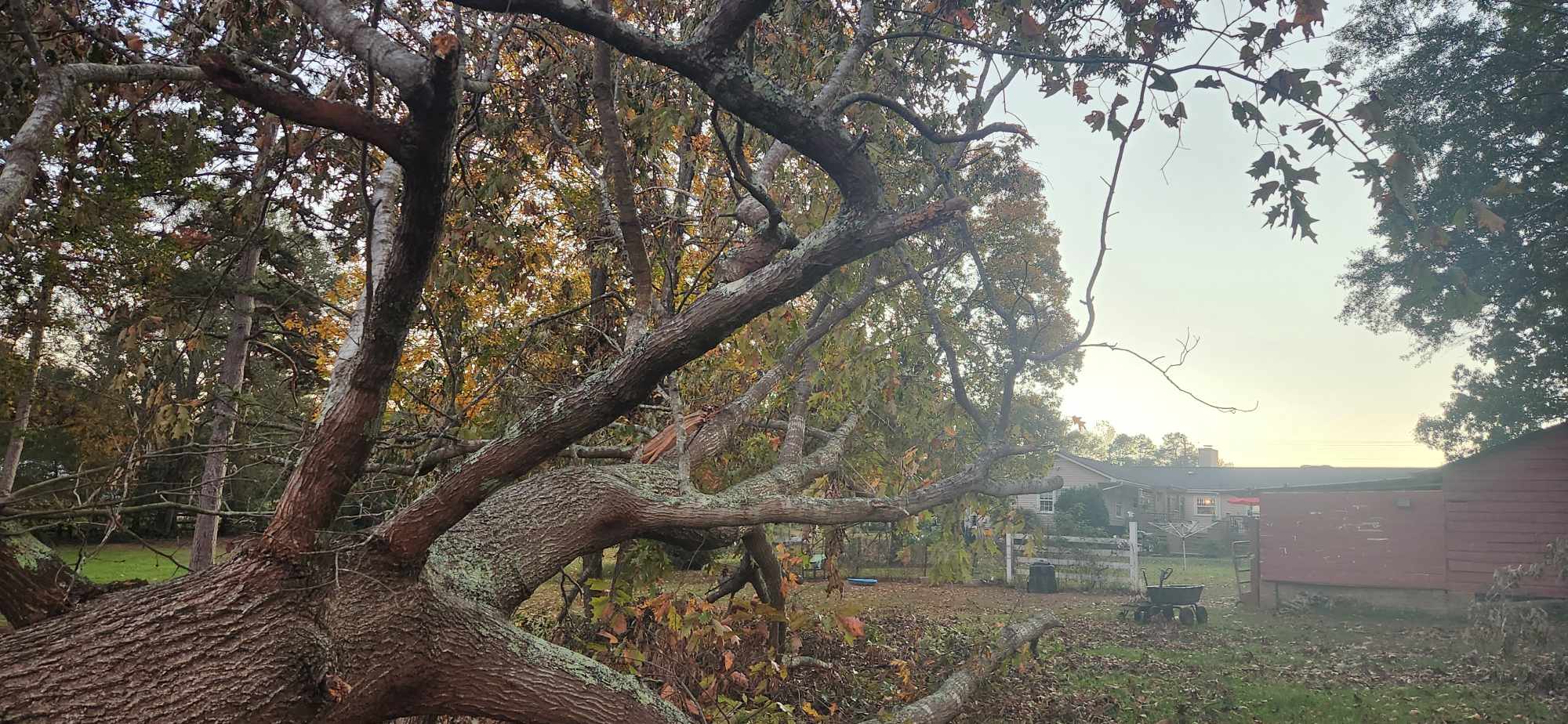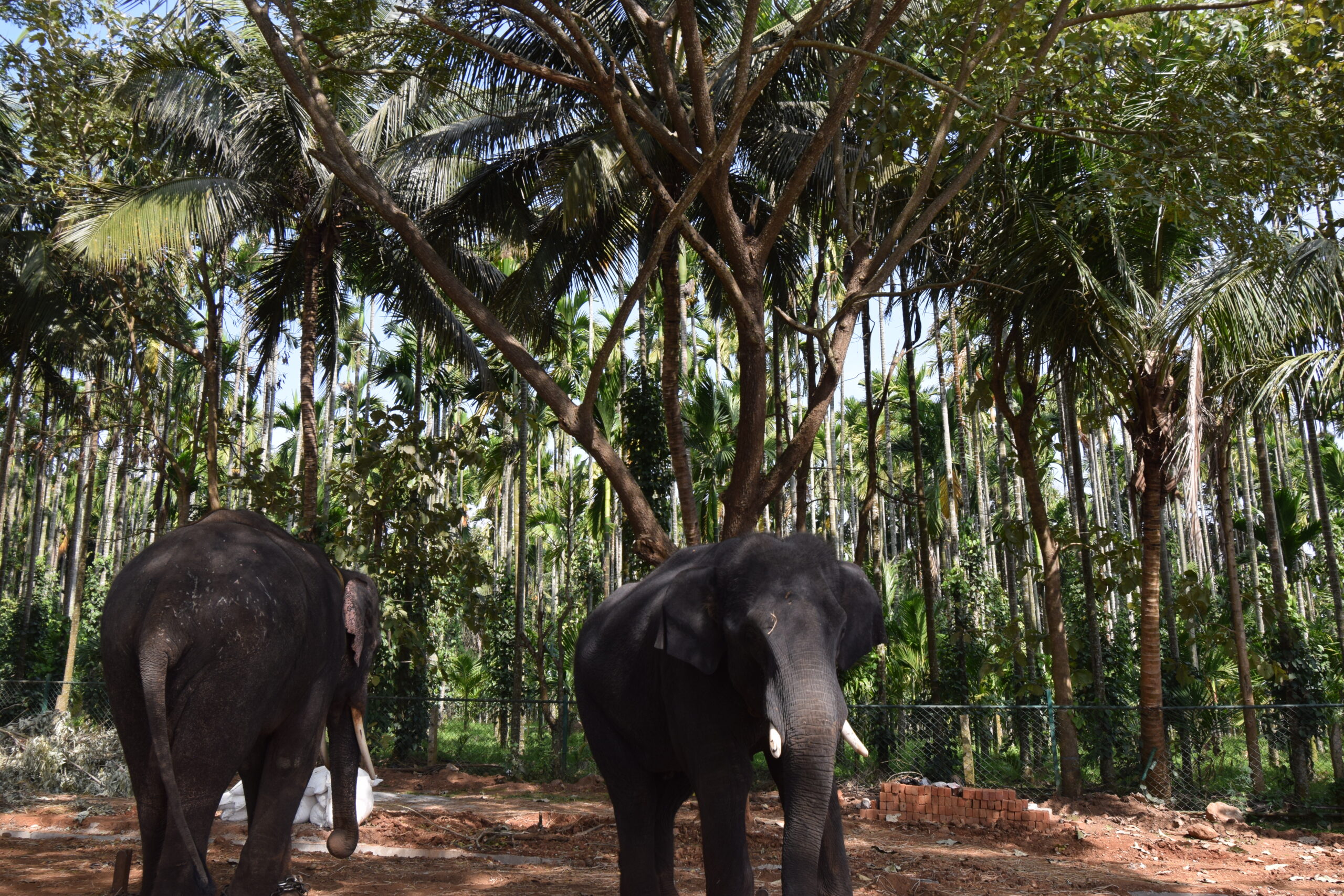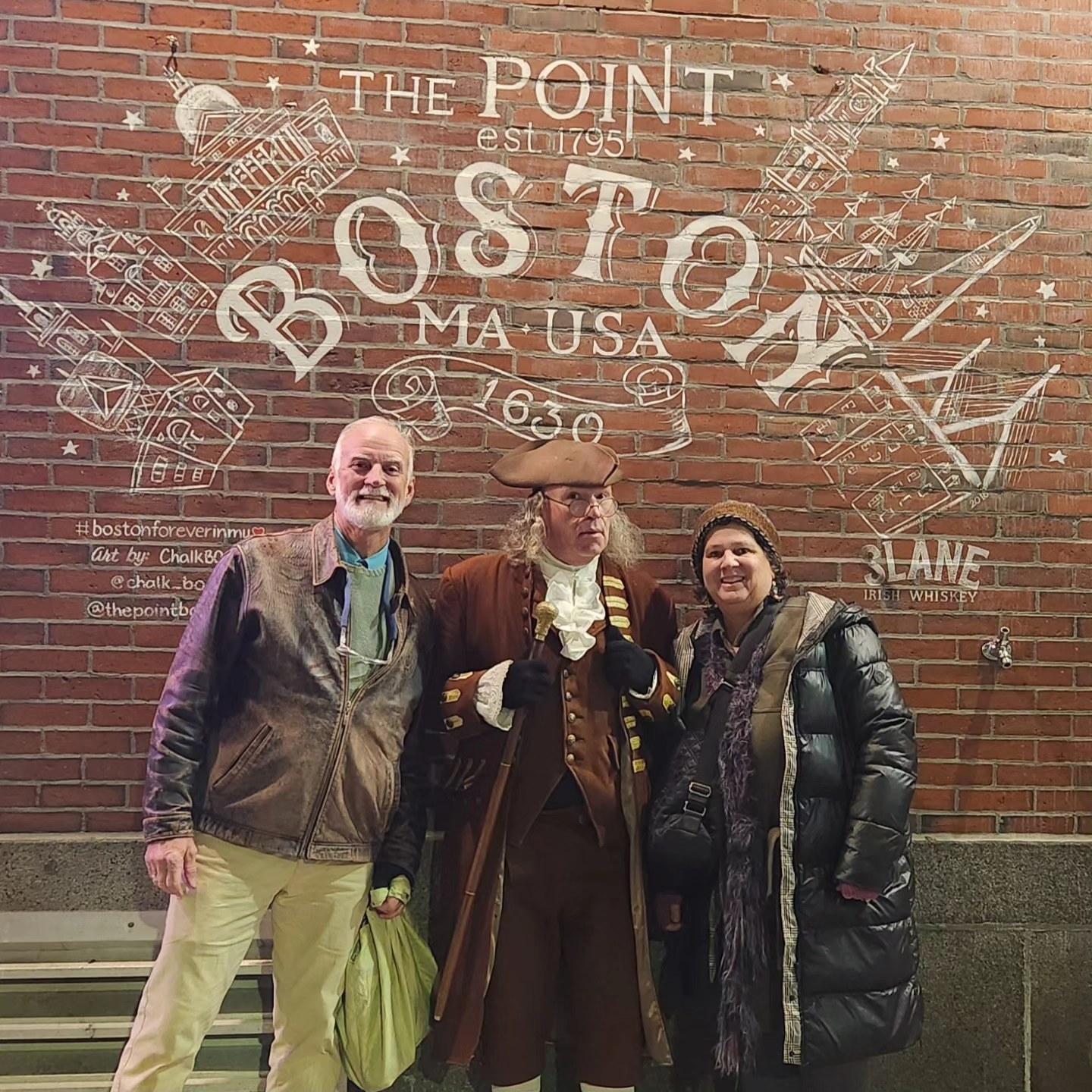Jonathan
“To a female Toucan, size matters. These birds we’re listening to are all males. There’s one across the river, one on this papaya tree, the other one is up the mountain side. And somewhere in the forest there’s a lady looking for her guy. The males are all calling to the lady and twisting this way to give her the best view of their bills.”
“Jonathan, why are the girls interested in the bills?”
“The larger and prettier the bill, the more genetically fit he is and the a longer bill means a greater reach.”
As we chatted, the Toucan on the other side of the river flew to our side and landed on a tall Cotton Tree. Amy inhaled quickly, almost gasped, as this impossibly colorful bird lit just over our heads and began to croak.
“Jonathan, have I told you about the first time I saw a Toucan?”
My wife rolled her eyes and mumbled “not again.”
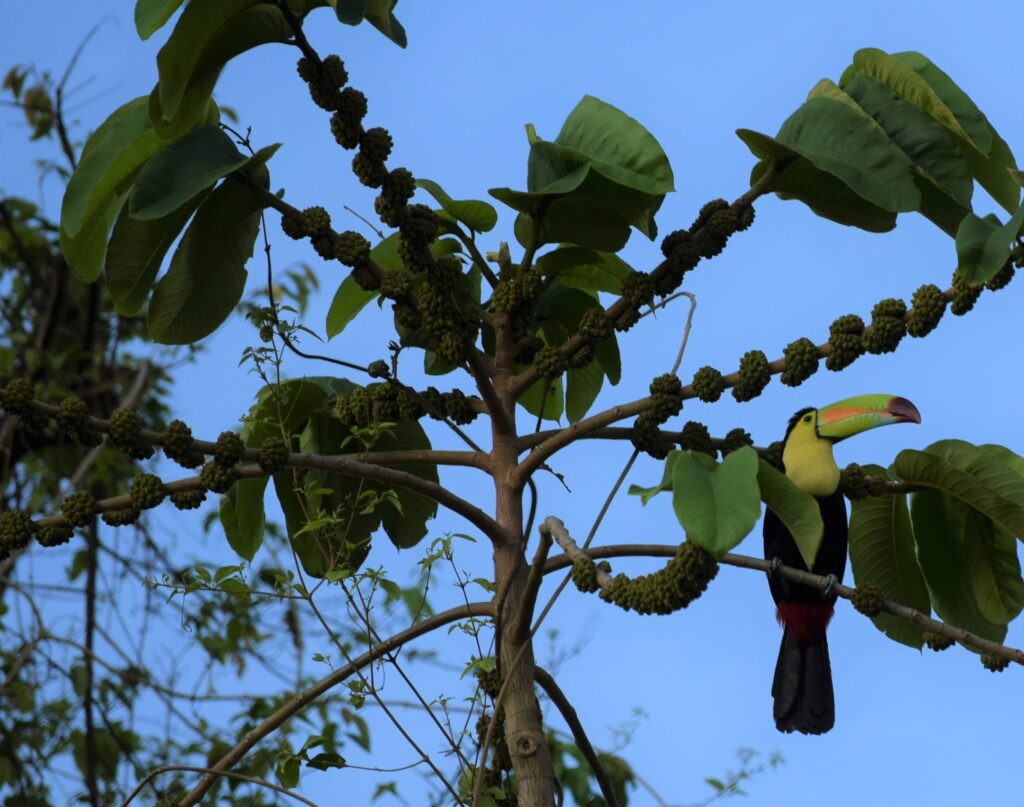
We met Jonathan Urbina at a roundabout in San Ignacio. He told us to “look for the guy dressed like a bird guide, then slow down and I’ll get in.”
When I told Amy about my arrangement with a total stranger in this new city, she gave me a thumbs up. This is why I love my wife. She trusted me to not let a raging lunatic into our car and if Jonathan did turn out to be a raging lunatic, she assumed I could take him if things in our small rental car quickly deteriorated into a fight to the death. At exactly 6:00 am on the 7th of April, we entered the roundabout near Cahal Pech and Amy pointed to Jonathan. He wore hiking shoes, tall black socks, pale blue shorts, a long sleeve dusty red shirt, a wide brimmed hat, a pair of binoculars around his neck and a small backpack. Amy decided he was our guy.
“Even if that’s not Jonathan, he’s definitely a bird guide. We’ll pick him up anyway.”
Jonathan jumped into the front seat, introduced himself, and we were off.
“I thought we’d head to Black Rock Road, which is about five miles long and when we get to lunch time, we can eat at Black Rock Lodge and maybe Cameron Boyd, he’s the owner, would join us.”
Black Rock Road was about seven miles south, in San Jose Succotz, a small Mayan village near the border town of Banque Viejo and the short ride down the Western Highway gave us some time to get to know one another. Jonathan has a degree in Wildlife Biology and Conservation from Murray State University in Kentucky. He’s tall, fit, slightly weathered from his time outdoors, and Orlando Bloom handsome, if Orlando’s skin was the color of dark rum. And he’s a dog lover and happy we’ve brought Otis along. We found him through a Facebook group where several folks in the area recommended him for a bird guide.
“So did you guys have a target bird?”
I looked in the rear-view mirror and searched Amy’s eyes. Maybe she knew what a target bird was?
“Are Scarlet Macaws a possibility?”
Now I get it. A target bird is a specific bird for a single outing.
“Sorry Amy, it’s very, very unlikely. Although they have been seen at Black Rock Lodge it’s late in the year for them. There’s but a few and they’ve already flown to Red Bank.”
“Jonathan what could we see this morning?”
“Toucans, Orioles, Tanagers, Buntings, Jacamars, Euphonias, and we could see some Emerald Toucanettes or Aracari.”
Black Rock Road is as bumpy as one would expect from a name like that in this part of Belize. We drove about a mile off the highway before Jonathan asked me to stop and park. Birds tend to be more active first thing in the morning and again in the evening. The males are off collecting food for themselves or the nest and as the day warms up, many birds will head for the safety of their nest. At this point on Black Rock Road, our right side is green foothills, and the left is fields for cattle. Amy spots a Scissor-Tailed Flycatcher right away. With wings whose undersides fade from white to orange to pink to black, a white head, and a tail longer than its body, a tail that opens wide like the legs of a hurdler at full stride, these flycatchers are quite glamorous.
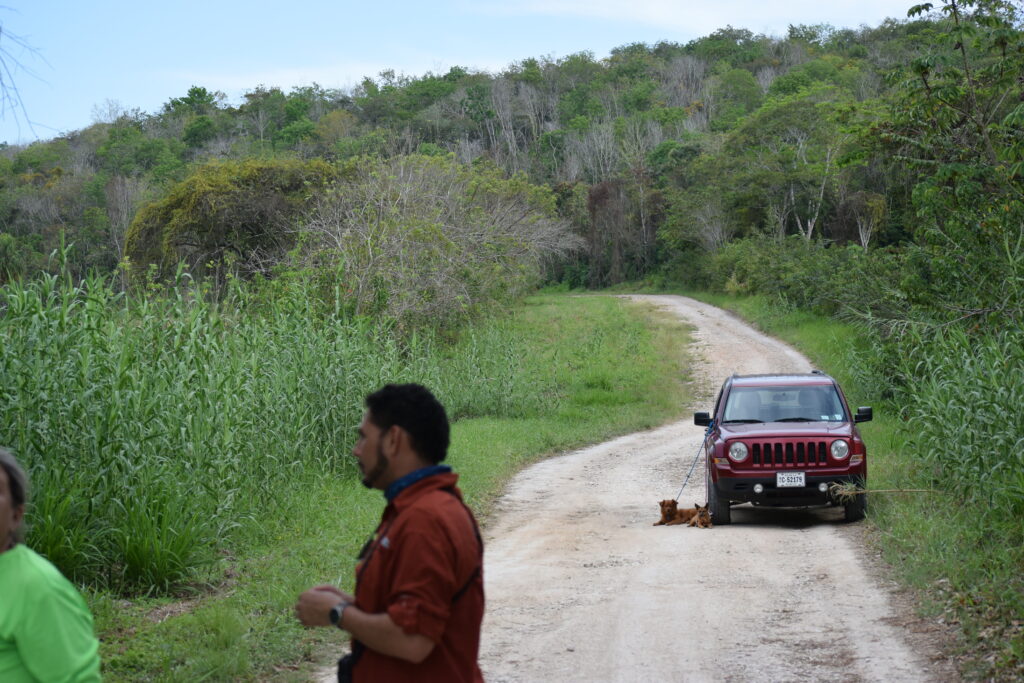
“Good catch, Amy.”
Jonathan suggested we walk about a quarter mile or so from the car then bring the car and leapfrog this way all the way to Black Rock Lodge. It will eventually get hot but right now it’s maybe 75 with 50% humidity and a brilliant blue sky. In no time Jonathan finds a variety of Seedeaters and Grassquits. These are sparrow sized and smaller birds that prefer the company of tall grasses and naturally dine on seeds. The Morelet’s Seedeater is common here in southern Belize. They’re tiny birds, all black and white, with a call reminiscent of a kid’s squeaky toy, and that squeak can be heard perhaps 100 feet away. They prefer to sit on a high perch and squeak into the blue of the sky. Although they’re black and white, I do admire these little birds for their pride. Many of the more colorful birds tend to hide in the jungle while these guys have no problem sitting on a high perch. Right out in the open and squeaking their happy squeak.
As the morning progressed, Black Rock Road narrowed and gained elevation. On our left the Macal River carved through a deep valley of gray slate and yellowing limestone. On our right the mountain rose at a 45-degree angle and was heavily forested by so many shades of green, and so many shapes of leaves, as to defy the imagination. Trees, vines, bush, grass, and briar all vying for the sun’s attention, and all seemed to hold birds. A half dozen parrots chatter into view and Jonathan quickly calls out,
“White Fronted Parrots. They’re landing in that Bullet Tree.”
I’m able to carefully gain an advantage on them by getting the sun behind me and steal a nice shot with my Nikon. There must be two dozen varieties of parrot in this part of Belize and to me they all sound the same. “Squawk!” Jonathan was able to ID them as they flew past on a 45-degree offset, maybe 40 yards away. How did he do that?
“Voice, wing beat patterns, you know, the usual ways.”
“Oh.”
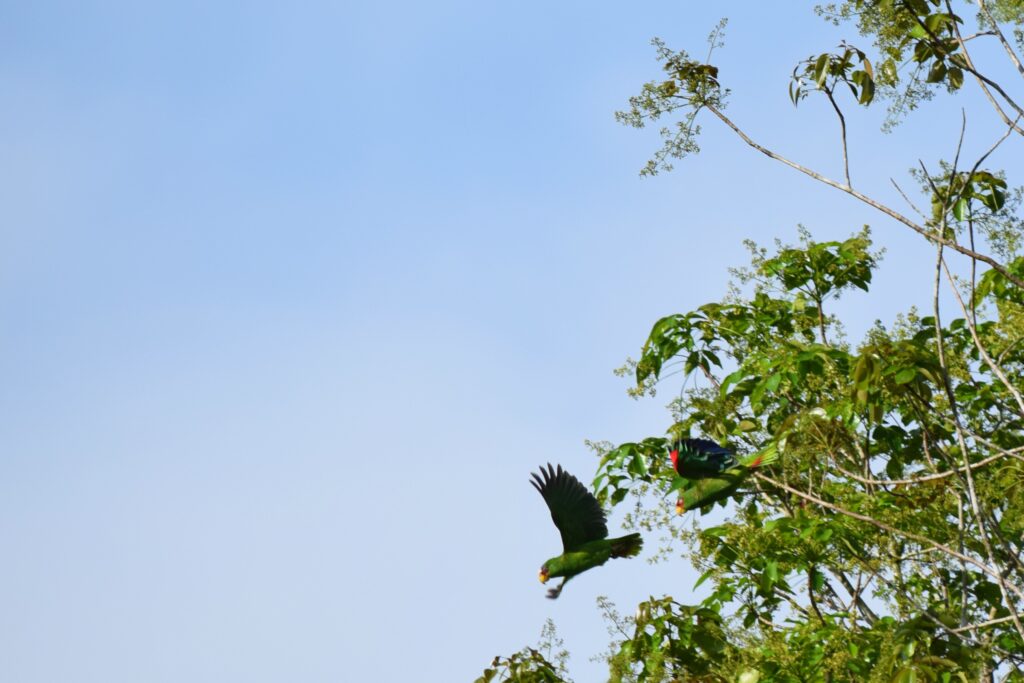
If he says so. Soon we’re buzzed by a Green Mango Hummingbird. She’s zipping through the tree limbs over our head, maybe 15 feet up and it looks like she’s gathering something.
“She’s snatching spider web silk to use as a foundation for her nest. See how she’s going from web to web?”
My wife is mesmerized as my Nikon clicks off a few shots.”
“Jonathan I’ve never seen anything like that before. That is so amazing.”
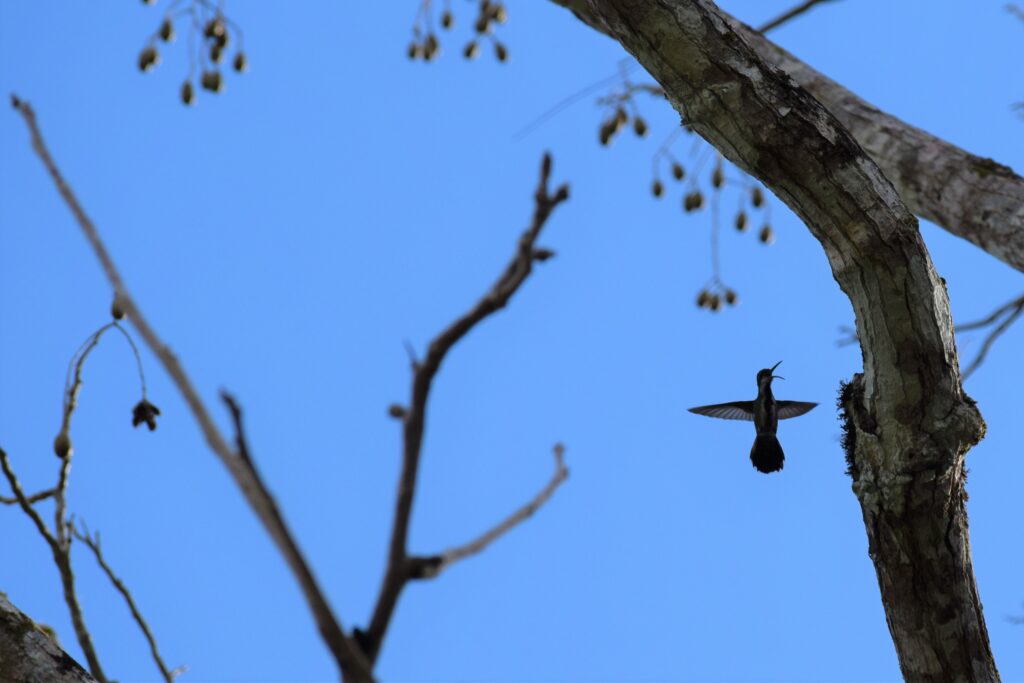
Jonathan wheels and points to the briars on a fence line and calls out, “Rose Breasted Grosbeak. See him behind those flowers?”
“Uh, no. I don’t see shit.”
Jonathan laughed and noted, “You’re not like the other birders I’ve met. Most of us are so serious.”
I promised to be more serious, engaged the Nikon and searched the briars with its zoom and was rewarded with an inflight shot as he raced across the road behind us. In my mid-flight photo the Grosbeak has his wings fully tucked in, he’s smooth, totally aerodynamic and resembles a feathered missile streaking across the sky.
Many of these birds are familiar to us in the US but when they migrate to Central America for winter, they all squeeze into a narrow part of the world. We’re seeing birds from the eastern US from the Mississippi River to the Atlantic coast. In the distance Jonathan hears Scarlet Rump Tanagers. These guys are about the size of a Mockingbird and jet black save for their fire-engine-red rump.
“Jonathan why on earth would this bird have a red ass? What’s the point?”
“I’d guess to attract a lady that’s into red butts.”
“Yeah, I suppose so.”
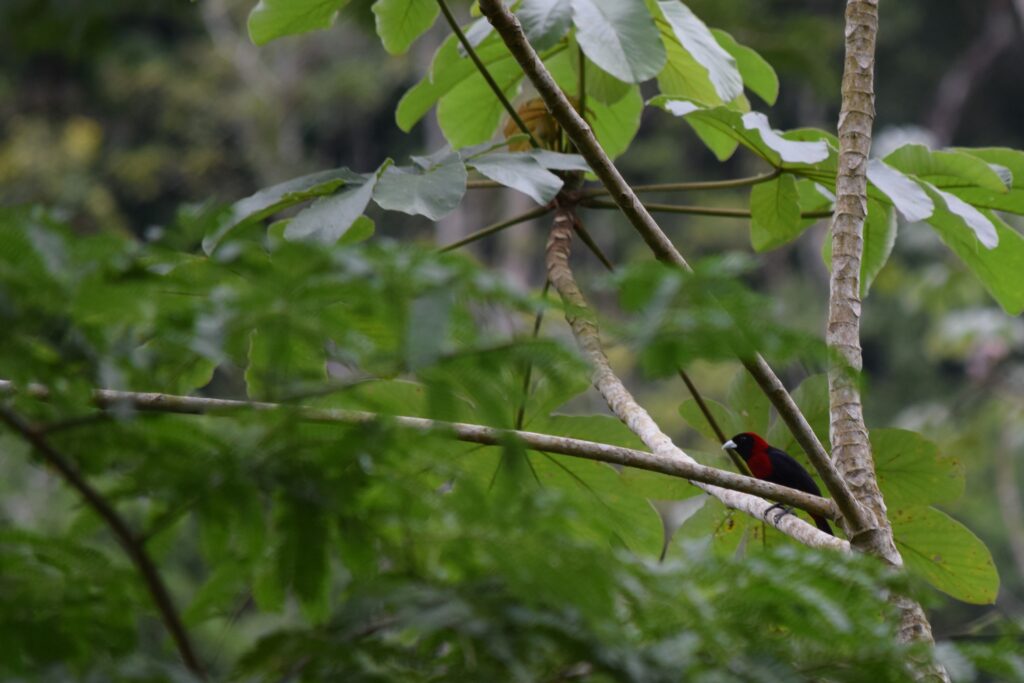
“Ooh listen. Crimson Collared Tanager. That papaya tree, then halfway up the trunk, now left at 9:00 o’clock at that long limb, now track it to the end. See him?”
The Crimson Collared Tanager looks like he’s wearing a red and black track suit with a red helmet. He’s all black except where he’s red and he’s got a fat white bill. Unlike the Tanager his red is earthy, the Tanager is a fire engine red. He has a high-pitched squeak that trails off then he repeats his squeaks. Jonathan was able to ID him based on one note of his squeak.
“Jonathan, have you ever seen a show called Name That Tune?”
“Excuse me?”
“Nothing.”
Soon we’re surrounded by the croaks of Toucans and Jonathan is schooling us on the dating habits of female Toucans. These are Keel-Billed Toucans, the same bird we’ve seen on that dumb box of godawful Froot Loops. While these Toucans do eat a lot of fruit, they’ll also eat other birds, insects, and the eggs of other birds. Maybe the cereal should’ve been called Insect Loops?
As Miss Toucan makes her choice, the other two males depart. In the distance Jonathan hears a snap, like a cue ball hitting a neatly racked set of billiard balls. As if to head off my question of what was that? he exclaims, “White Collared Manakin.”
The rainforests of Central America are incredibly diverse on so many levels, and I think the omnipresent heat and humidity might create quirky habits in some of its residents and this bird is one of them. The males, when they want a little action from a female, will clear a small spot on the jungle floor, maybe about two feet in diameter. They’ll clean it of leaves and grass then they’ll start their “Hey ladies” dance. It’s more of a gymnastics routine with a little drum solo thrown in. Keeping near the floor, the Manakin will quickly flitter between the limbs on the perimeter of his sex floor (have a better name for it?). As he does this, he’ll snap his wings so quickly he’ll create that cue ball sound. Often that sound is repeated so quickly he’ll sound like a supersonic zipper.
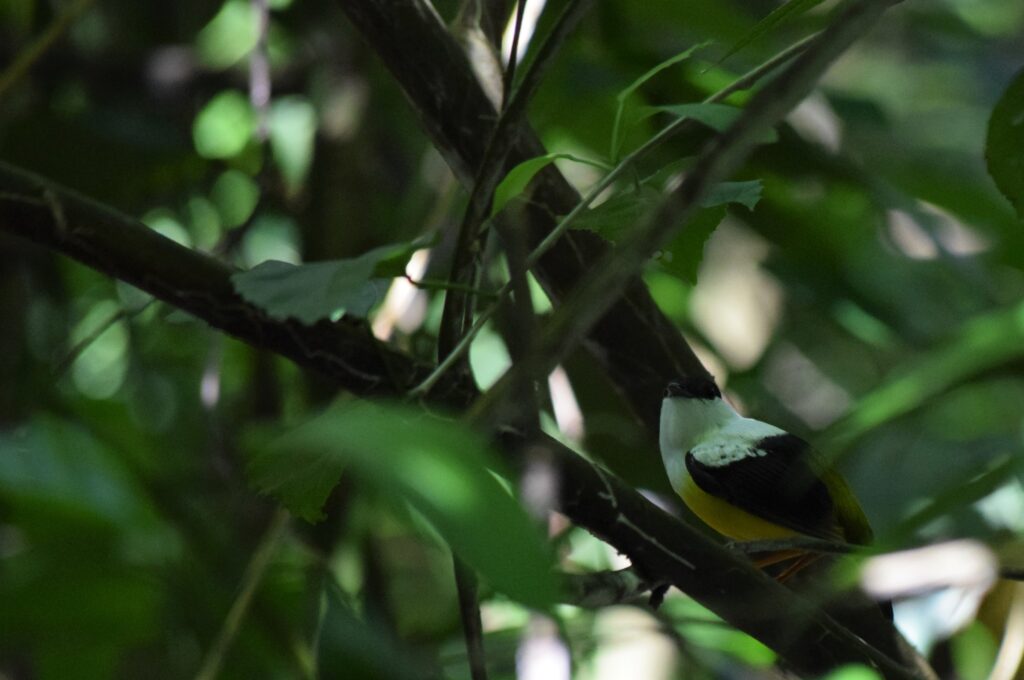
“Snap! Crack! Zzzzap!”
Once an interested female appears, he’ll continue this routine to impress her until she signals she’s ready. Got it? This is a little bird, about the size of an Eastern Bluebird with a more complex mating ritual than most male humans. Unfortunately, we were too far away to see the routine although we could clearly hear his snaps and cracks.
“That’s crazy, Jonathan. How does he manage to make that sound?”
“Amy, he does it all just with his wings.”
Jonathan’s attention turned to a new bird. “Listen. Rufous Tail Jacamar. A pair of them, look high to the crown of this tall tree then over to the three o’clock position.”
We both followed his lead and sure enough, two iridescent metallic green Jacamars. Jacamars look like a giant hummingbird. Their tails positively sparkle like they’re sequined, they sport an outrageously long bill and when they perch, they sit up like a hummingbird. And as a bonus, a garish Gartered Trogon was in the same tree. If Amy had a target bird, this and the Toucan was it.
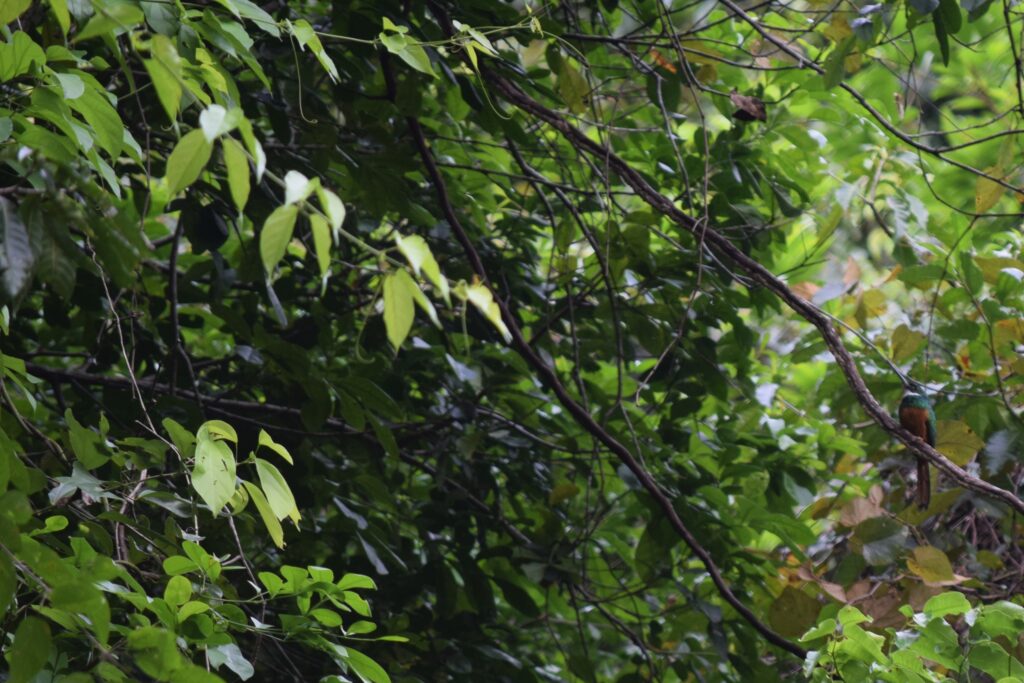
Soon we were at the parking lot of Black Rock Lodge. We’d been in Jonathan’s company for almost four hours and had recorded almost 100 birds, many of them new to us. As we headed into the Lodge, Jonathan introduced us to its owner, Cameron Boyd. Cameron is a native of Colorado where he owns another hotel. He welcomed us into his open-air dining room where we cooled off with ice water and Belikin beers then Jonathan showed us the birding overlook. At the north side of the dining room was a wooden rail about four feet high. Here the Lodge sits about 200 feet above the Macal River. Cameron has hummingbird feeders and about 30 feet down a large tree stand that holds fresh fruit. And at this stand there’s a cornucopia of colorful birds, from Indigo Buntings to Scrub Euphonias, and one we’ve successfully avoided until now. It’s a Red Legged Honey Creeper.
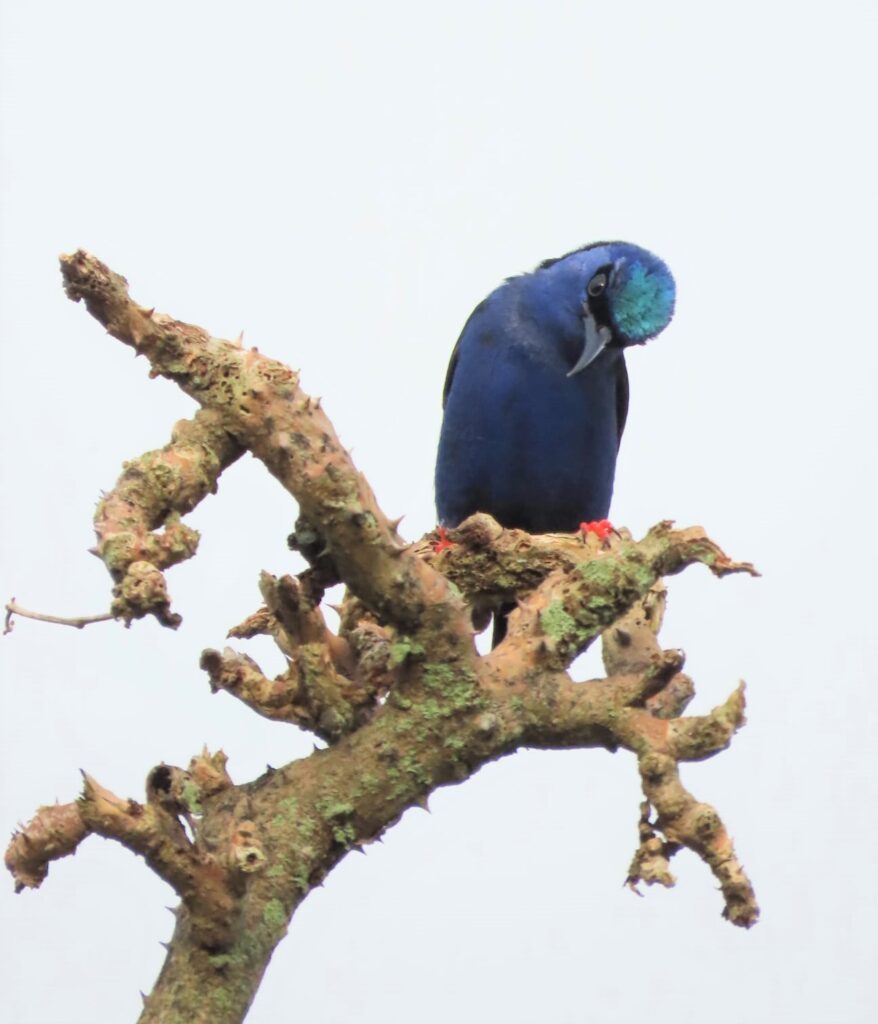
Imagine if Elton John, let’s say mid 1970’s Goodbye Yellow Brick Road Elton John, got a phone call from The Good Lord himself and was given carte blanche to design one small bird. And Elton gave the bird bright reddish-orange legs, sparkling indigo blue feathers, a jaunty turquoise cap, a longish bill, and wings that are school bus yellow, but only from underneath. And let’s top it off with a tiny Zorro style black cape and bandit’s mask. This is the Red Legged Honey Creeper. It’s a tiny bird, maybe four inches tall and with its long bill and brilliant colors, one could be forgiven for mistaking it for a large Hummingbird. The creepers are in the Tanager family, and you might think they’re easy to spot. I’d guess they make easy targets for birds of prey, so they tend to keep to the interior of the rainforest. Cameron has convinced them to feed at his fruit platter. While we chatted, a half dozen Collared Aracari lurched into the area squeaking like worn out springs on a battered Dodge. These are in the Toucan family, smaller than the keel billed ones. Their wings and head are black, their bellies yellow with dashes of red and black. And their bills look like they were put on properly. A Keel Billed Toucan’s bill looks like it was twisted on and went a half turn too far. But no one’s told the Toucan, and they get along just fine with that enormous bill. Cameron brought his lens over and focused it.
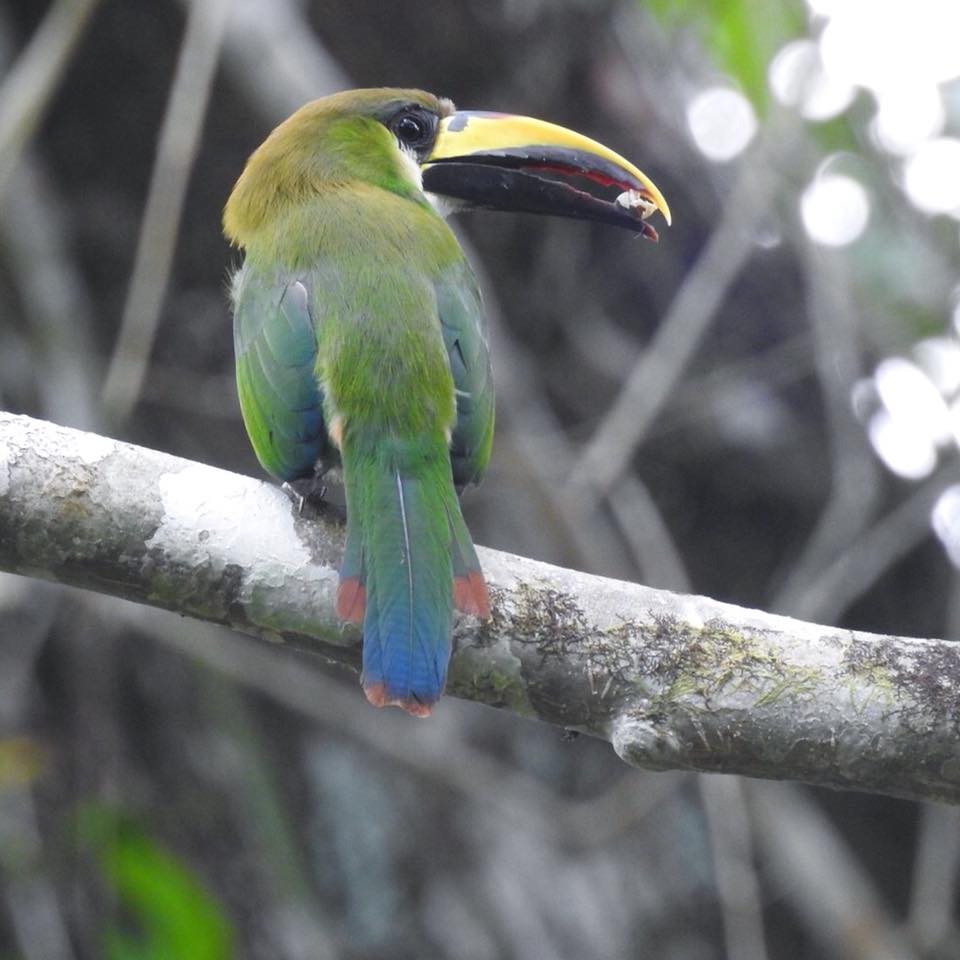
“There’s three Toucans in Belize, Aracari, Keel-Billed and of course the diminutive Emerald Toucanette and we have a nest of them right here. Take a look.”
Amy peered into the scope and saw a small thick bill, yellow on top, black on the bottom. His feathers at the base of his bill are bright purple and most everywhere else he’s bright green, a blue green, except where he’s yellow, a bright school bus yellow. As he exits the nest his tail shows an outrageous butt with black tail feathers. When it’s my turn to look about all I can manage is an exclamation.
“What the hell?”
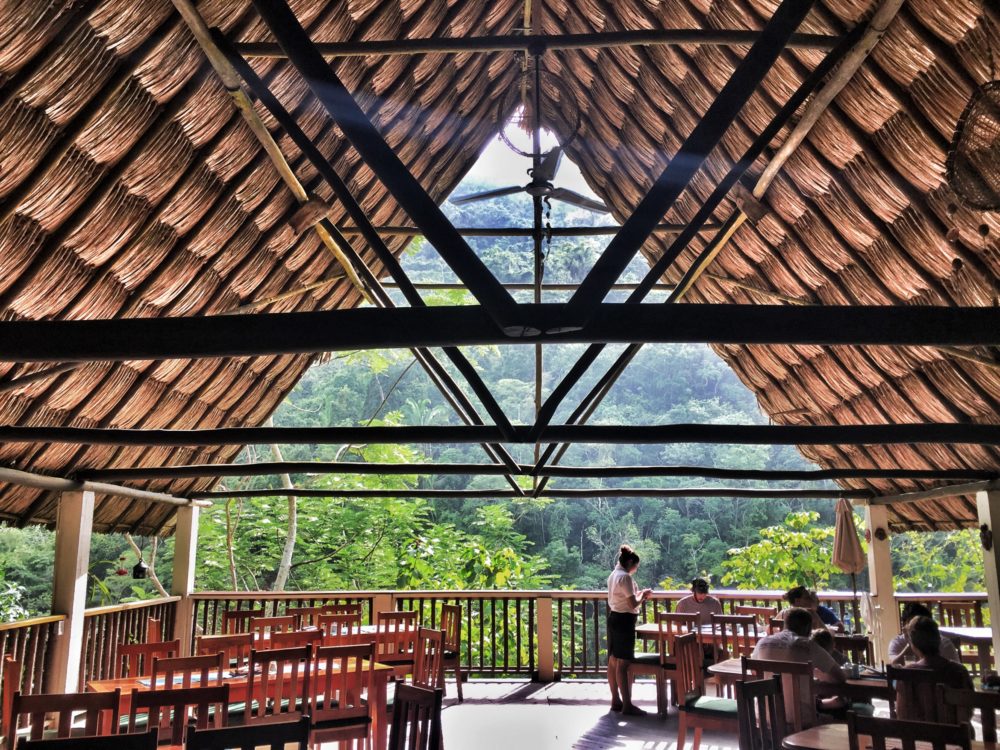
Cameron nonchalantly encouraged us to “thank me later.” All three Toucans in one afternoon is quite an accomplishment for a bird enthusiast. Our sandwiches arrived and we dug in. When we finished lunch, Cameron joined us and asked if we’d like to see one of the rarest raptors in the Americas, the Orange Breasted Falcon. He has a pair nesting on the cliff opposite the Macal River. Jonathan told us these falcons have been coming to Cameron’s cliff for about ten years and as Cameron is eager to share his falcons with us, we agree. We have to drive down the road about a mile to get to the best vantage point so Cameron, who was carless, grabs his spotter’s lens and tripod and the four of us, plus Otis, pack into our car and head down. Soon Cameron and Jonathan have set up their lens and have it dialed in on the falcons. These are small raptors, about 15 inches tall, and they’re apparently reclusive. Their nest is on the face of a cliff, in a small indent, about 300 feet over the river and about as far from humans as possible in this part of Belize. As Cameron takes in the perching female, he starts a running commentary on the history of OBFs in general, and these two. The whys and the how of their uniqueness. It’s a familiar tale of habitat loss and the ensuing challenges of reproduction. Cameron knows his birds. While we watched from the dining room overlook, he spoke bird fluently with Jonathan and as he’s behind the scope and providing knowledgeable running commentary on these two Falcons, I realize how unconventional Cameron is. I know successful entrepreneurs like him back home, and they all have control issues. They have rigid schedules and tight reins on the company and those habits spill over into their personal lives and their hobbies. And most of them play golf because again it’s something they can control. Whether it’s through lessons, practice, new clubs, more lessons, etc. But to Bird on the level that Cameron does, well that means giving up control because these are wild animals and one may only predict what they’ll do and when they’ll do it, one cannot control them. No wonder I liked him. Cameron invited me and Amy to have a look at the falcons through his scope and they are quite majestic birds. As Jonathan was out of ear shot, I mentioned to Cameron I thought Jonathan was an exceptional birding guide, maybe the second best we’ve ever hiked with. “Years ago, we camped at Pickett State Park in east Tennessee, and we hiked with this young park ranger. I swear this guy could ID every darn sparrow just by their song. Do you know how many sparrows are in east Tennessee?”
“Chef, I’d guess at least twelve.”
“Probably. And this guy was mimicking their calls like they were his own kids. In contrast Jonathan would hear and ID a lot of today’s birds so quickly, way before we even saw them. I’d bet he was studying bird call as a little kid.”
Cameron agreed that Jonathan was an exceptional bird guide, one of the best in Belize.
Later Jonathan confided on what sparked his love of birds.
“I’ll have to blame that bird book on my dad’s desk. It was a Peterson Field Guide to birds of Mexico. I was fascinated by the plates. They looked so real. Then one day, when I was about 8, I was on my grandmother’s guava tree, and I recognized one of those birds from the book. I quickly hopped off, went for that book, it was a Blue-gray Tanager and that’s how it all started! But what really changed my life was when dad took me to see Scarlet Macaws in the wild. When I saw that flock, I knew it. From then then I knew I wanted to work with either birds of prey and or parrots. And I’ve had the privilege of working with both.”
Birds are the pixels of nature. They’re tiny dots of color, texture, light, and sound. And they form the backbone of everything that’s beautiful in our natural world. They are the narrators of the outdoors and when one hikes, or merely sits in their backyard or a local park and is able to appreciate birds for what they are, we all benefit.
~ John
Follow Jonathan Urbina on Belize Bird Conservancy
Stay at Black Rock Lodge
You’re reading the year-long adventures of John & Amy Malik in Belize, Central America. We’re professional chefs, restaurant owners, food & travel writers, adventurers, recovering tent campers, and hikers. We prefer authentic street food over a steakhouse, craft beer over traditional lager, a glass of Spanish Garnacha over California Merlot. Should you feel so inclined, please share this essay with someone you’d take on a rustic adventure, and sign up for our next dispatch from Belize. Just click here.



